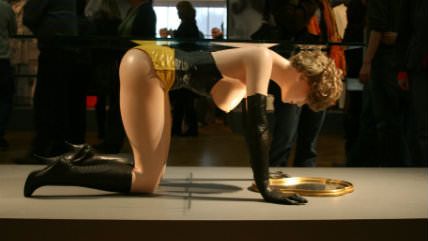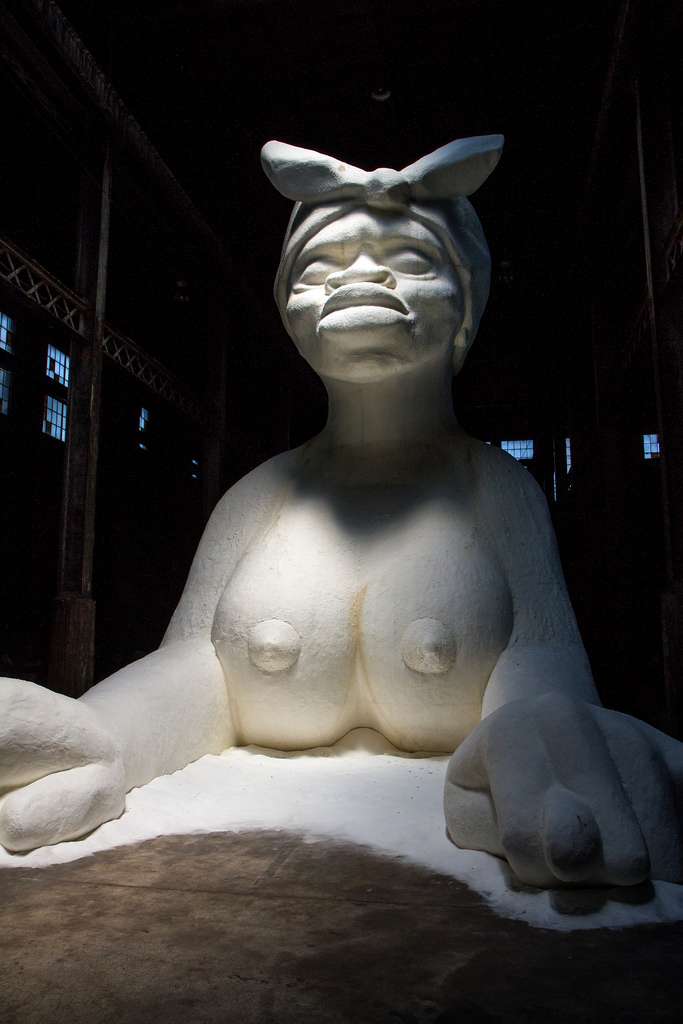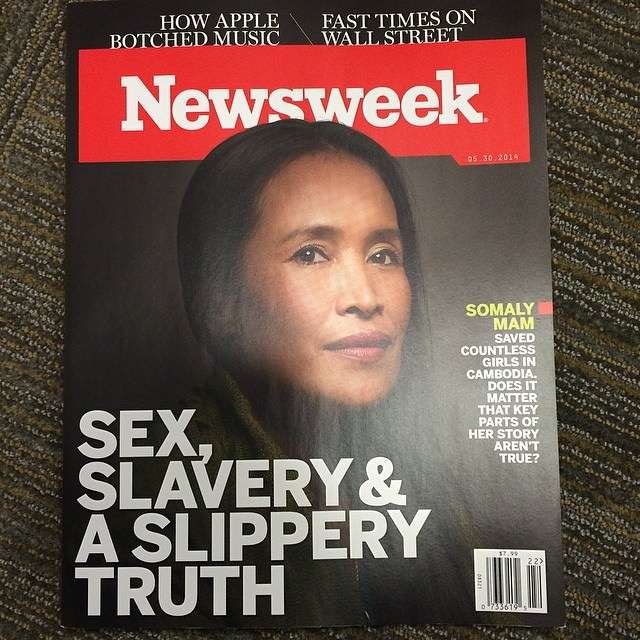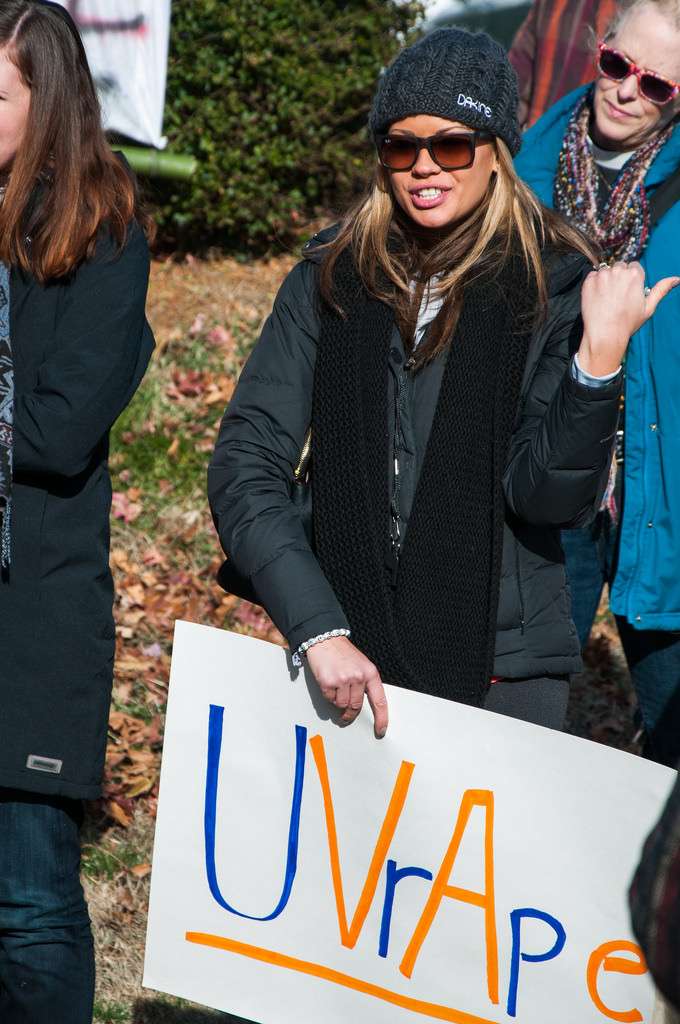4 Ways Neo-Victorianism Reared Its Ugly Head in 2014


Perhaps it was inevitable: Freed from first-hand experience with either mid-century authoritarianism or the excesses of 90s political correctness, millennials have been enthusiastic about using state power to enforce preferred social and cultural norms. Taken together with the portion of the population that will always embrace big government—sex-fearing social conservatives, sex-fearing feminists, narcissistic idealists of all stripes—these well-intentioned but deluded young statists have been busy busy busy ushering in an era of neo-victorianism.
Unfortunately, this neo-victorianism hasn't involved any economic deregulation, making more drugs available over-the-counter (though freeing birth control from its prescription shackles was a major theme for enterprising Republicans around election time), or a renewed fancy for French cuisine. (All Victorian-era elements I could get behind!) Rather, it's taken the form of fighting to shield delicate sensibilities from "offensive" ideas, limit the parameters of free expression, and return women to the realm of dainty dolls needing special protection. Here are four ways neo-victorianism has reared its ugly head in 2014:
Art Censorship
This year's seen an array of high-profile cases of art censorship, albeit not at the hands of the state. These days, it's more generally commercial or non-profit institutions—a university, a gallery, a theater—caving to public pressure to ban some art work. Brendan O'Neill catalogued 10 such instances from 2014 here.
There's nothing new about places succumbing to public outrage over offensive art. But in the past, this outrage tended to be the purview of conservatives or religious types, and their objections centered on material deemed sacrilegious, sexually explicit, or just plain "vulgar". These days, calls for art censorship come largely from the left, who object to works perceived as racist, sexist, homophobic, or otherwise intolerant and triggering.
The thing is, there's little market for intentional and explicitly hateful art these days, and it's not works of this variety that receives the wrath of our nouveau Anthony Comstocks. Ironically, the art modern progressives deem beyond the pale tend to be pieces aimed at challenging bigotry, misogyny, etc. In one recent instance, students at the University of Iowa demanded—and the administration obliged—that a visiting professor's installation highlighting race-based violence be removed because it involved the "real and scary symbol" of a Klu Klux Klansman. In London, protesters demanded that the Barbican shut down an exhibition designed to "confront colonial atrocities committed in Africa" for being racist.

Kara Walker, a black artist whose work often deals with racial stereotypes, was criticized harshly for a Brooklyn sculpture dealing with racial stereotypes. Artist Allen Jones' pieces designed as commentary on the objectification of women got him roundly panned as a misogynist. In New York, the Metropolitan Opera's production of "The Death of Klinghoffer"—a play concerning the murder of an American Jew by Palestinian terrorists in 1985—was met with protests for being anti-Semitic because it "humaniz(ed) the terrorists' actions."
Scotland-based writer and sociologist Tiffany Jenkins summed up the travesty of all this nicely in a recent piece for The New Republic. "Underlying these protests … is the idea that we, the audience, are not capably of empathy, and that the purpose of art is not is not to create and convince people of other worlds but to reflect the reality as the self-selecting chosen ones see it," wrote Jenkins. "It is an exclusive and divisive outlook, and it is one that ultimately negates the basis of art."
Next: Sex-trafficking hysteria >>
Sex-Trafficking Hysteria

In America and around the world, prostitution prohibitionists have been embracing a new rationale for why it's imperative to criminalize the sex trade. Gone are the days when it was good enough to simply say "the dirty whores have it coming" because they're dirty whores, or allude to some vague "societal ills" that prostitution causes. These days, the culturally correct way to criminalize prostitution is to define all sex workers as de facto victims and all clients as committing "violence" against them—hence the need to make purchasing sex illegal and selling sex slightly less illegal. It's a theory of prostitution law that started in Sweden and Norway and officially came to Canada this year with the passage of Bill C36. It's also begun to assert itself in American cities through the employ of "prostitution diversion" programs, special sex-work courts, and an increased focus on punishing (and publicly embarassing) johns.
In order to make these strategies more publicbly palatable, anti-prostitution advocates (and the lawmakers who love them) have been doing their damndest to drum up fear about the great sex-trafficking menace. Sure, sex trafficking exists, and like all human trafficking it's terrible. But it's nowhere near as prevalent as these folks would have us all believe. Time and time again, their numbers and rhetoric have been debunked; in 2014 alone, the "true stories" of several famous sex-trafficking victims-turned-advocates have fallen apart. But this doesn't stop politicians like Sens. Dianne Feinstein (D-Calif.) and Mark Steven Kirk (R-Ill.) from pushing "anti-sex trafficking" legislation that conveniently "saves" women by expanding federal wiretapping authority and web censorship capabilities. As I've said before, when the government goes after "sex trafficking", somehow everybody becomes a little less free.
What does all this have to do with neo-victorianism? The ideas that 1) no woman could possibly consent to sex work, and 2) sex traffickers are lurking around every corner are tenets that both took hold in the Victorian era. Before this, prostitution was seen as the purview of wicked harlots who delighted in defiling the husbands of God-fearing women, but a shift in Victorian England social mores soon branded prostitutes as victims—forced into it by hard times, or perhaps ignorant of the error of their ways (what today's zealots might call "false consciousness"), or most likely made to do it by evil men.
Back then, no one used the term "sex trafficking" but instead spoke of women sold into "sexual slavery"—and by the time this meme hit America it was a 'hide-your-kids, hide-your-wife, they're making everyone sex slaves!' kind of panic. As Thaddeus Russell detailed in Reason's May 2014 issue, "thousands of newspaper articles, books, sermons, speeches, plays, and films depicted a vast underground economy of kidnappers and pimps" leading young women to their ruin, but "there is scant verifiable evidence of American women being kidnapped and physically forced into prostitution." Nonetheless, "the claims made by the movement against 'white slavery' helped create, expand, and strengthen the police powers of an array of government agencies."
Hate Speech Hoopla
Greg Lukianoff, president of the Foundation for Individual Rights in Education (FIRE), has called ours a "new age of sensitivity and compassion." He doesn't seem to mean that as a compliment. It's not that sensitivity and compassion aren't worthy norms, but in trying to enforce them by fiat, today's progressives—particularly of the sort vocal on Twitter and on college campuses—"are echoing, in rationale and substance, the thinking of the old Victorian censors both in the UK and the United States," Lukianoff told the British mag Spiked. "Campaigners in both eras share this idea that there are certain moral ends which are so much more important than someone's measly right to freedom of speech."
Today, the way around normally robust respect for free speech in America is to label something "hate speech." Who could be for hate speech? With that rhetorical construction, it's a politically toxic thing to defend. But of course for the First Amendment to mean anything, noxious sentiment is exactly the kind of speech it much extend protections to.
This is a hard sell, however, to young progressives and Twitter mobsters, who seem to a) take defending "free speech" as code for "I hate blacks, women, trans people, gays, and I rape puppies", b) believe it's possible to definitively classify what is and isn't "hate speech", and c) restrict or punish hate speech without (unacceptable) unintended consequences.
Obviously, I reject all three of those ideas. The first is patently ridiculous; the last reflects hubris and shortsightedness. The second reminds me of a book I'm reading right now on the history and future of privacy law (Intellectual Privacy, Neil Richards).
In the late 1800s, one of the main motivations in conceiving of invasion of privacy tort law was to prevent newspapers from publishing any info on the "private" realms of (rich) people's lives. Though the distinction between private and public facts was surely a blurry one, lawyers Samuel Warren and Louis Brandeis wrote in their famous 1890 paper on the issue, certainly it was something courts and law enforcement could easily sort out on a case by case basis.
"The right to privacy was born as a reactionary defense of the status quo," wrote Stewart Baker at the Volokh Conspiracy. "Then, as now, new technology suddenly made it possible to spread information more cheaply and more easily. This was new, and uncomfortable. But apart from a howl of pain—pain 'far greater than . . . mere bodily injury'—Brandeis doesn't tell us why it's so bad."
That privacy-invading speech caused unquantifiable emotional costs, and that these warranted the overrule of normal First Amendment protections, was at the core of early privacy tort law. And circling this were cries for civility and worry over the ways new cameras and publishing mores were enabling crimes against it.
Sound familiar? The rational for banning/criminalizing hate speech is that it's so emotionally traumatizing it serves, even in the absence of any incitement or physical consequence, as a form of violence, and this trumps free speech concerns. When Professor Steven Salaita had a tenured job offer rescinded over comments he made concerning Israel and Palestine this summer, many insisted that it wasn't his political opinions but his uncivil tone—his "hate speech"—that was unacceptable. When folks rush to take a legislative sledgehammer to problems like sexting or digital harassment, it's done under the logic that the Internet, smart phones, and social media have imbued the issue with a completely new and unprecedented urgency.
As a Supreme Court justice in the 1920s and '30s, Brandeis came to reject his early privacy paper's possibility of a court system equipped to separate privacy-infringing speech from permissible speech. And its concept of a legal scheme built on separating private and public spheres turned out to contain some pretty nasty assumptions about gender roles and a sexist, inflated concern for women's purity and protection. The hindsight of the past seems to hold at least some considerations relevant to speech-limiting efforts today.
"We may well be an increasingly ill-mannered society, one that's soaking in violent video games, instantly available online porn, and Here Comes Honey Boo Boo like our mothers used to soak their hands in Palmolive liquid," wrote Nick Gillespie earlier this year in a defense of vulgarity. "But we are also a society in which youth violence, sex, and drug use are all trending down. If that means putting up with, you know, ladies cursing and other examples of unambiguously crass behavior, it seems a small price to pay."
We are also a society that—for all the way's social media's microscope may make it appear otherwise—is becoming more tolerant, more open-minded, less bigoted, less homophobic, and less accepting of sexual violence. Now is not the time to panic, and certainly not to trample rights; why make bigots into free-speech martyrs? If tolerance and equality truly are winning on their own merits (and I think they are), then letting their opponents freely express their grievances with them can only help.
Gendering Consent
In the Victorian era though parts of last century, men were considered unable to be raped. Prostitutes were considered unable to be raped, as were female slaves. Married women were unable to be raped by their husbands. And the logic behind these all dismissals lay in the fact that rape's criminalization had naught to do with its general violation of bodily autonomy. Rape was, rather, a very specific offense rooted in the guarding of (white) women's purity. Rape was considered wrong only so far as it defiled a "good" girl or woman.
This is obviously a shit way to look at rape, and certainly one that none (or at least few) now wish to return to. For decades, feminist-minded folk have been working to obliterate the more entrenched distinctions, arguing that things like sexual history or a prior relationship with a perpetrator are irrelevant. And while some more radical feminists object, mainstream feminists have also been leading the charge to recognize sexual violence against men as real, too.
But in recent years, something subtly undermining of these concepts has been brewing, and it reached a tipping point in 2014. This is the year that The Great Campus Rape Crisis became front-page news, as California passed "affirmative consent" legislation and the Obama administration mandated new ways for universities to handle sexual assault. These developments haven't been universally bad—the way colleges handle sexual assaults does deserve examination, and encouraging young men and women to think about the way they give and express consent could be a worthy endeavor. Yet as Reason's Robby Soave, Cathy Young, Shikha Dalmia, and I have all elaborated on here previously, the way we've been going about these things is something of a disaster.

I won't rehash all our particular complaints (which are myriad) with California's affirmative consent legislation and many university sexual-conduct codes. For my purpose here, the part that matters is the gendered double standards. In everything from the way people talk about these rules to the way they're written, male students are almost always presumed to be the aggressors, and female students the victims. In the realm of words, perhaps this isn't so pernicious—it is the more common scenario, and we have to be able to talk without 1,000 caveats sometimes. But often the talk belies deeper things than just a need for shorthand. In practice, we see things like female students being deemed unable to give legal consent if they're intoxicated, while intoxicated male students are considered totally legally culpable. We see the idea that saying "no" to unwanted sexual encounters may be too taxing for women to handle—and thus we should come up with new legal standards rather than teaching women to toughen up and assert their own sexual wishes. We get a scenario where rape means one thing for women, and something different for men.
When you add in the class element at play here—women on college campuses experience equal or lower levels of sexual violence than similarly aged women not in college, yet our focus on "ending rape" and teaching consent has centered almost exclusively on collegiate sex lives this year—a picture disquietingly similar to the old rape law disparities begins to emerge. Men and many women are considered to retain their agency when drinking, considered strong enough to voice non-consent when they're non-consenting, and to report sexual violations without coddling; but some young women, our elite young women, are just too delicate for these type of expectations.



Show Comments (90)